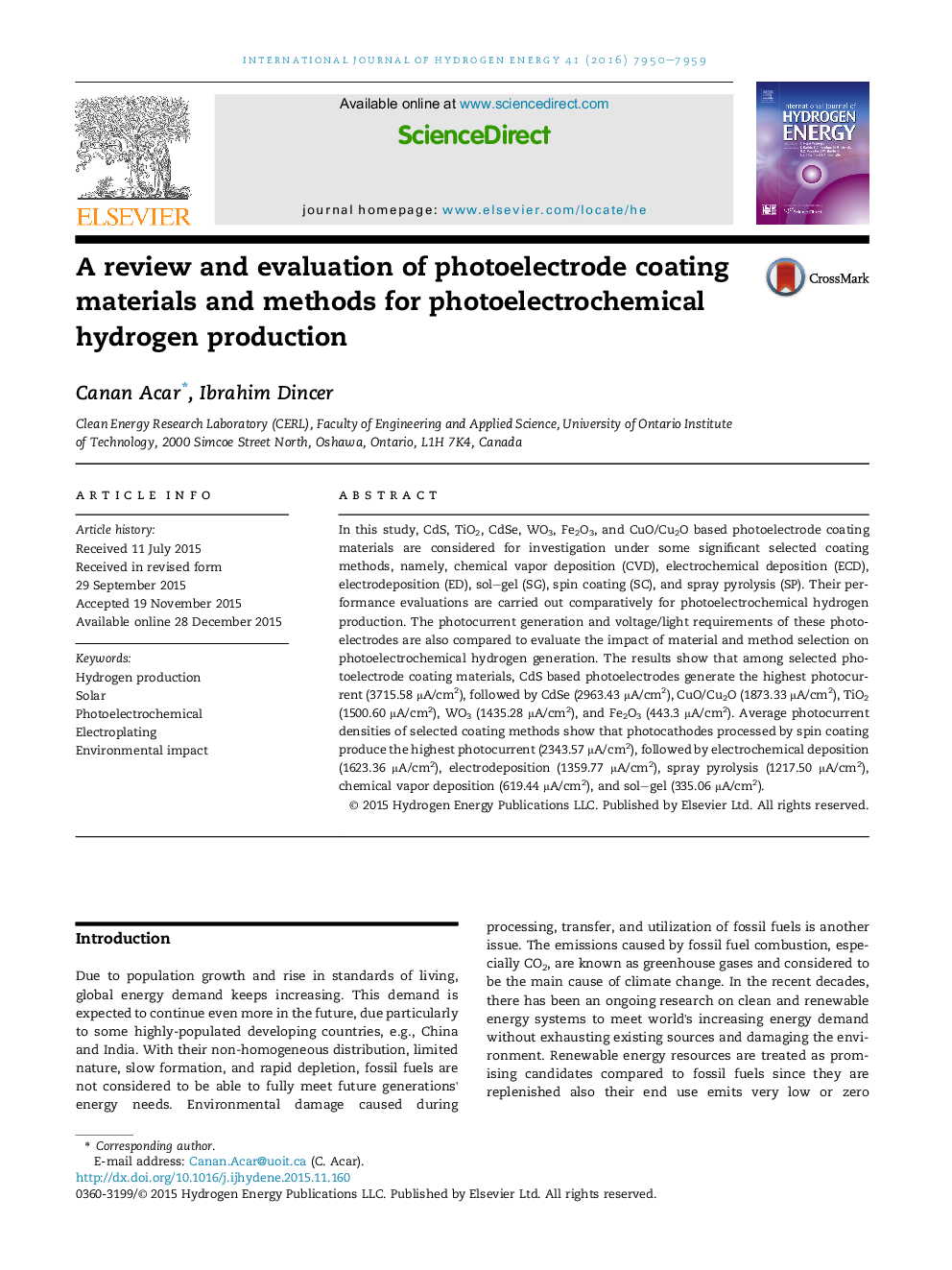| Article ID | Journal | Published Year | Pages | File Type |
|---|---|---|---|---|
| 1277288 | International Journal of Hydrogen Energy | 2016 | 10 Pages |
•Comparative assessment of various photoelectrode materials is presented.•CdS, TiO2, CdSe, WO3, Fe2O3, and CuO/Cu2O based photoelectrodes are selected.•Numerous coating methods are investigated in terms of photocatalytic activity.•Photocurrent generation and voltage/light requirements are compared.
In this study, CdS, TiO2, CdSe, WO3, Fe2O3, and CuO/Cu2O based photoelectrode coating materials are considered for investigation under some significant selected coating methods, namely, chemical vapor deposition (CVD), electrochemical deposition (ECD), electrodeposition (ED), sol–gel (SG), spin coating (SC), and spray pyrolysis (SP). Their performance evaluations are carried out comparatively for photoelectrochemical hydrogen production. The photocurrent generation and voltage/light requirements of these photoelectrodes are also compared to evaluate the impact of material and method selection on photoelectrochemical hydrogen generation. The results show that among selected photoelectrode coating materials, CdS based photoelectrodes generate the highest photocurrent (3715.58 μA/cm2), followed by CdSe (2963.43 μA/cm2), CuO/Cu2O (1873.33 μA/cm2), TiO2 (1500.60 μA/cm2), WO3 (1435.28 μA/cm2), and Fe2O3 (443.3 μA/cm2). Average photocurrent densities of selected coating methods show that photocathodes processed by spin coating produce the highest photocurrent (2343.57 μA/cm2), followed by electrochemical deposition (1623.36 μA/cm2), electrodeposition (1359.77 μA/cm2), spray pyrolysis (1217.50 μA/cm2), chemical vapor deposition (619.44 μA/cm2), and sol–gel (335.06 μA/cm2).
